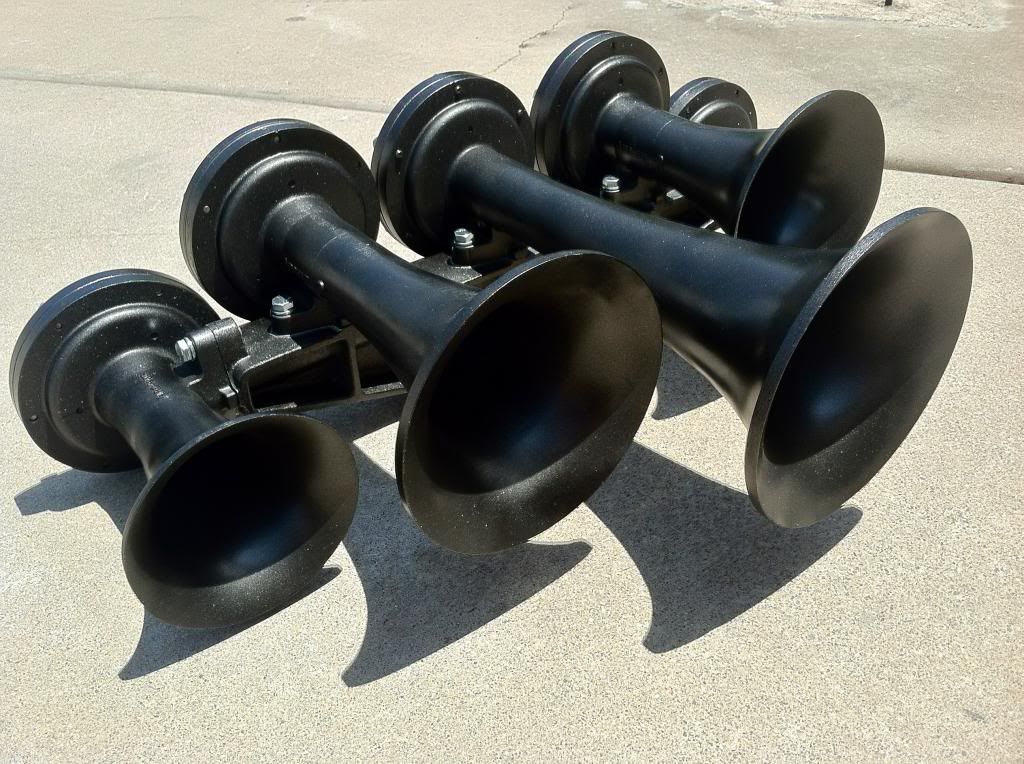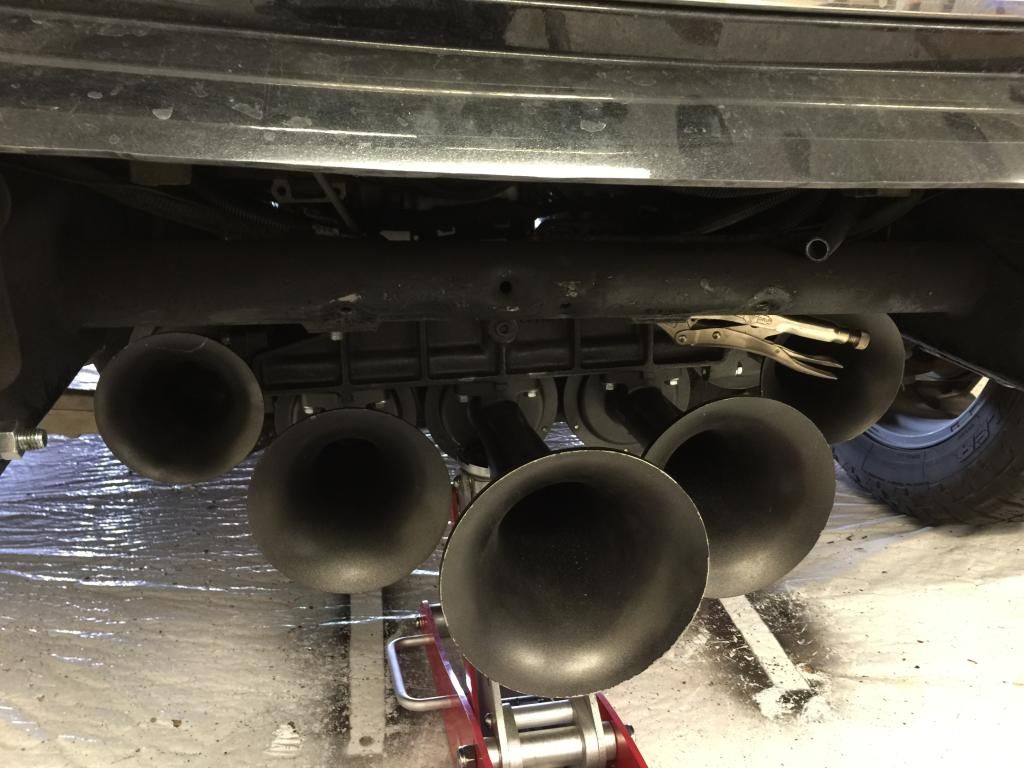Well it’s that time. I never thought I would get rid of her but I could sure use the cash. I have so many memories with this horn and it has never failed to put a smile on my face. I’m sure going to miss it. :’(
Its a raised letter (except for #1 bell), narrow font, K5LA painted in black metallic. The paint is pretty worn out now but these are easily re-paintable. Mike Muha also tuned this horn and did a great job on it!
-Before Tuning: D#+20, F#-30, G#+20, B-20, D#-30
-After Tuning: D#-30, F#-30, G#-30, B-30, D#-30
MAX PRESSURE: 110 PSI
Mike Muha recommended 90-110 PSI for this horn. I ran this horn at 100 PSI and I think that is where she sounds the best. Any higher and you will risk damaging the diaphragms and changing the tuning. This horn is already f’ing loud as hell at 100 PSI so there is no need to crank the pressure…trust me
Asking: $850 shipped to lower 48. Anywhere else the the buyer must arrange shipping.
I have some videos at the bottom so hopefully they work.
–I also have 3 1/2 electric valves, the same ones you find at hornblasters.com. One of them is used but still works, and the other two are new and never have been hooked up.
Used: $15 shipped to lower 48
New: $30 each, shipped to lower 48
–Lastly I have a remanufactured York 210 compressor with a dual v-belt pulley. Never been ran and has been sitting on my workbench for years just collecting dust.
Asking: $110 shipped lower 48
Running low on air for most of this video.
https://www.youtube.com/watch?v=N3plC7Z__1g

